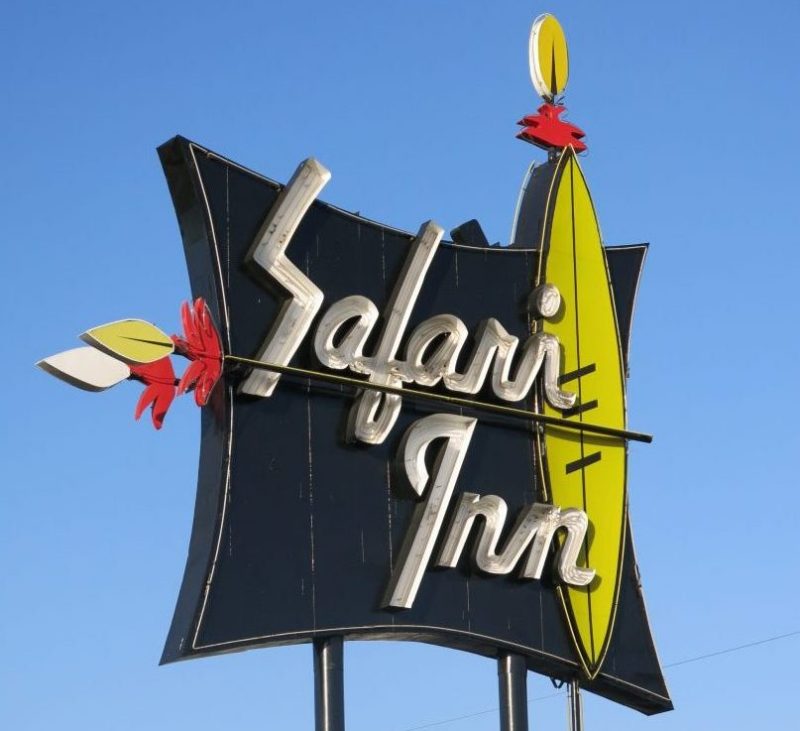Today, many of us take for granted the fact that we can hop in a car, book a room and tour an area for fun. The automobile, the interstate and the growing middle class in postwar America led to an increasing accessibility of travel. This is where motels appeared on the scene. Motivated by a passionate interest in Midcentury Modern architecture of all kinds and “the magical experience of staying in a motel as a kid,” Heather David has spent the last 10 years gathering photos and info carefully compiled in Motel California.
Historic Origins in San Luis Obispo
The “World’s First Motel” is in California. While there were other motor hotels (meaning you could drive and park your car just outside your room) at the time, the Motel Inn in San Luis Obispo was the first to use the term “motel.” Originally, Heather explains, it was shorthand for “motor hotel,” and the sign read “mo-tel.” Eventually the hyphen dropped.
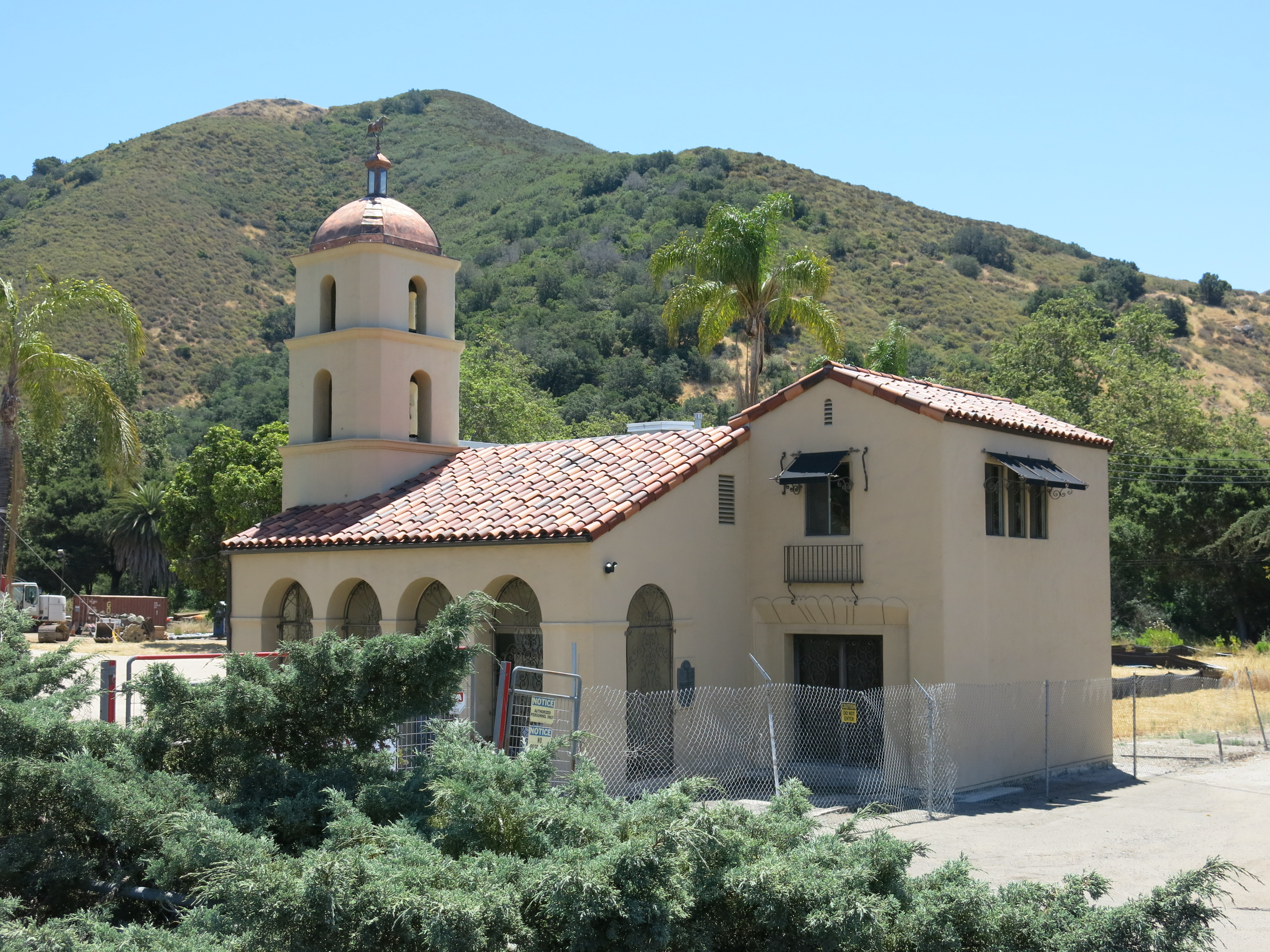
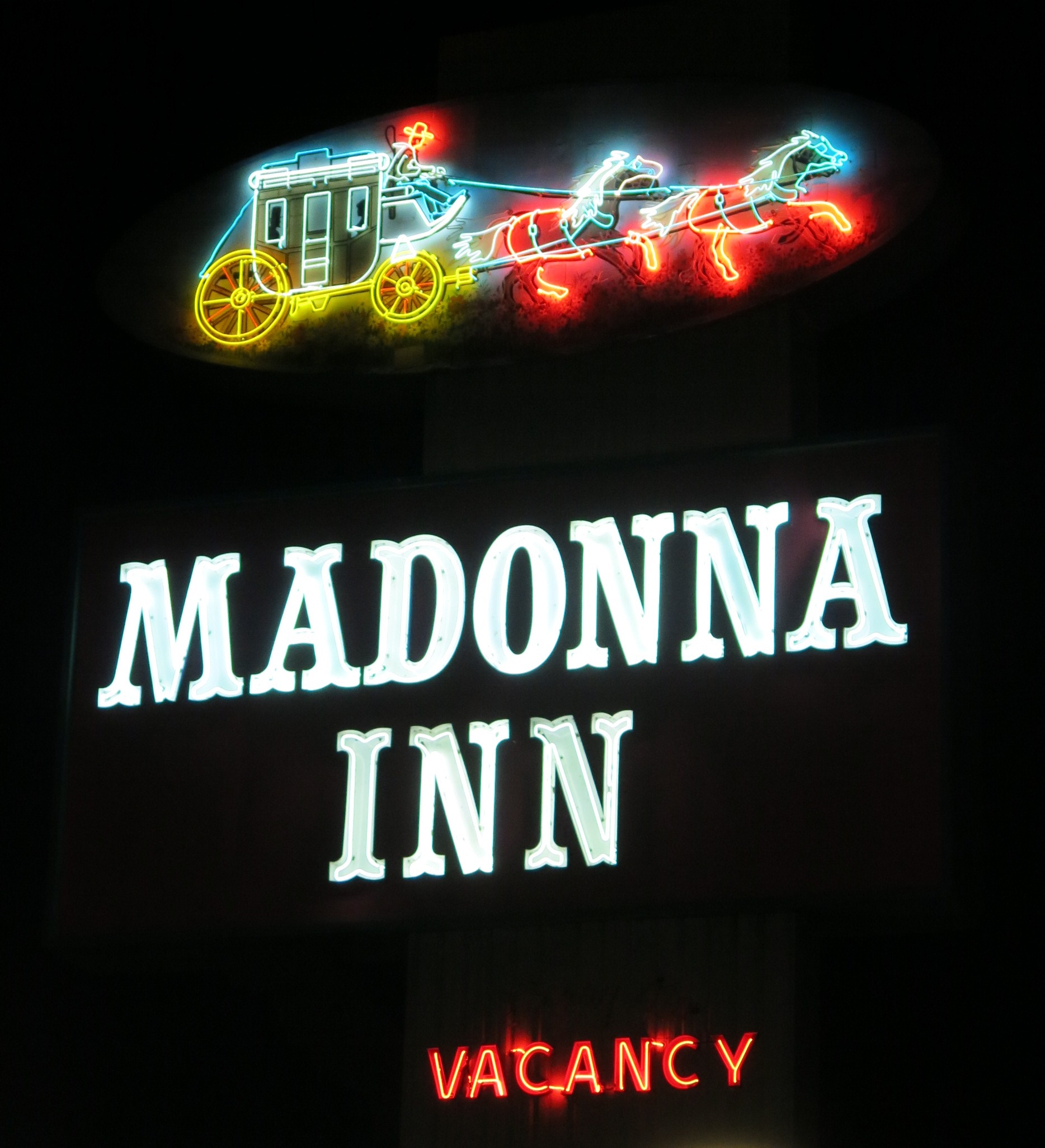
As major interstates were built, many of the motels along the previous thoroughfares were now out of the way. This, along with stiff competition and the arrival of the motel chains, makes it “like a miracle” if a motel survives at all, and even more so with its Midcentury Modern style and desirability to stay there in tact. However, Heather notes you still have choices across the Golden State. Here are a few you can visit today.
Stardust, South Lake Tahoe
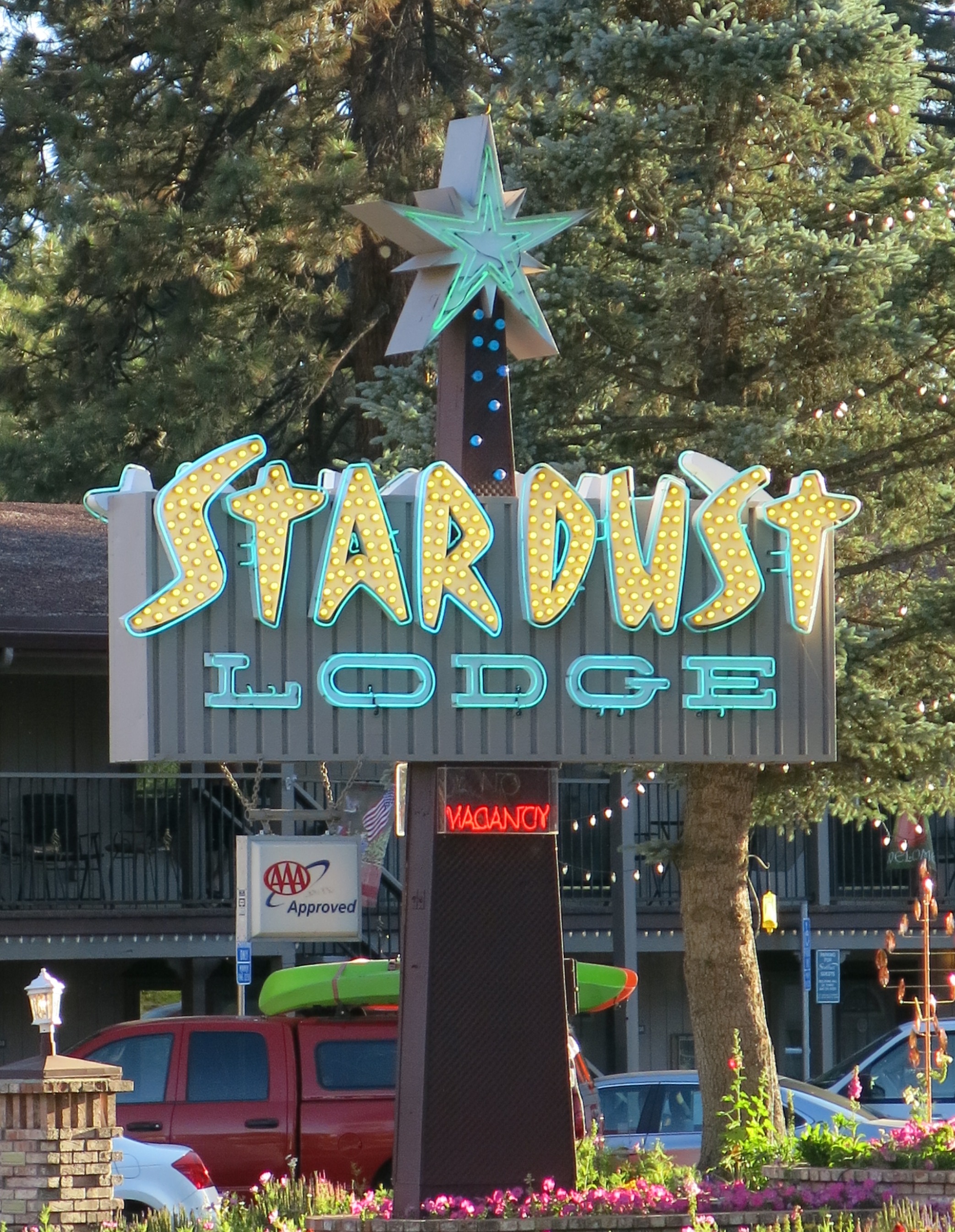
In many areas, there were soon “more motels than potential customers,” Heather says. To stand out from the crowd and to motorists zipping by, motels like this one have a large and eye-catching sign.
Phoenix Hotel, San Francisco
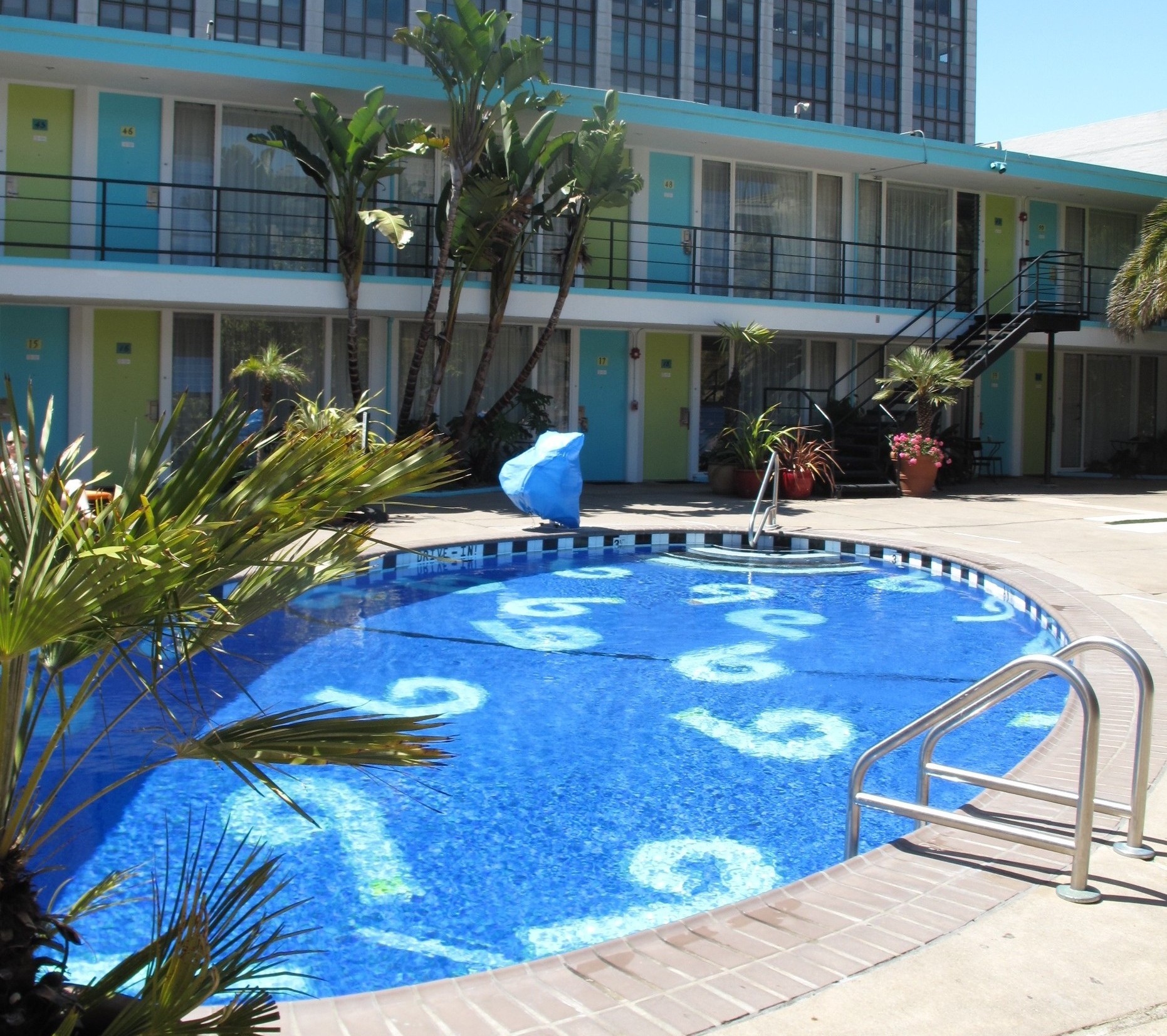
The Phoenix Hotel is an example of a midcentury motel’s resurrection. Businessman Chip Conley bought the 1956 Caravan Lodge and restored and renamed it Phoenix.
Safari Inn, Burbank
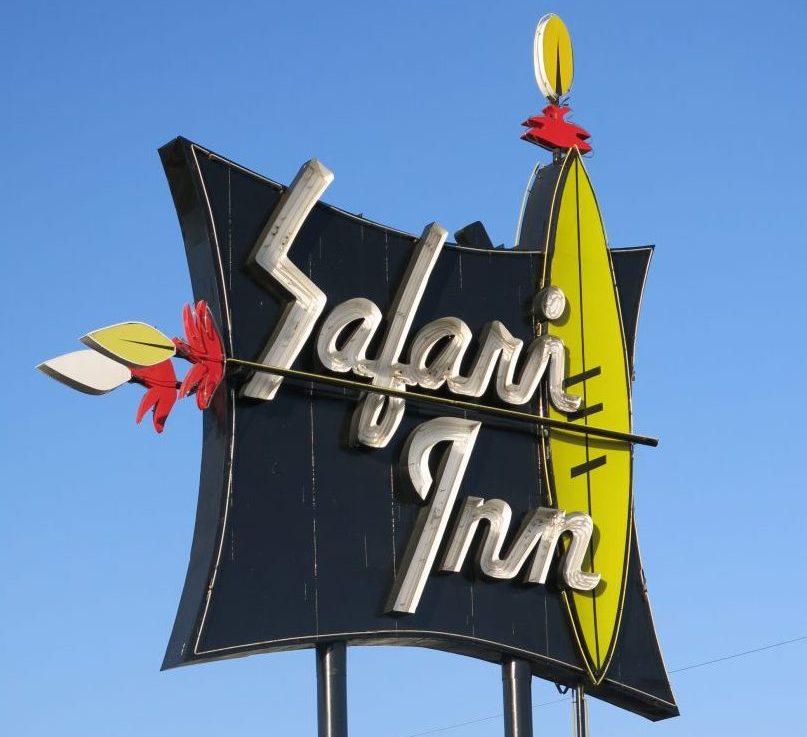
The Safari Inn in Burbank shows another trick to distinguish one motel from another—theme. Metal sculptures shaped like animals you might see on a safari reoccur throughout the building.
For more on Motel California, visit http://calmodbooks.com.

